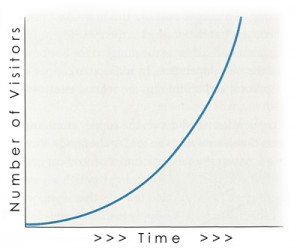Going from Level 2 to Level 3: The Most Difficult Transition a Thought-Leader Will Face
First, a little word.
What’s Level 2? And what’s Level 3?
And why have Levels at all?
For three simple reasons:
- Understanding levels gives you a handle on where you are – and where you are
going – each level is a different stage of author/entrepreneur maturity. Each one requires certain actions and accomplishments. Missing any crucial task means that getting to the next level is much more difficult – and perhaps not possible at all. - Reduce stress – each level has its own success signs – distinct to that level. If you know what makes for success for where you are right now, then you can focus on the results that make sense – and focusing with clear targets reduces stress.
- Clear understanding of next-step priorities and tasks – has different priorities and different tasks. (Coming soon: a priorities-and-tasks checklist that will let you move confidently to the next level.)
To find your level, you’ll use a simple mathematical formula (which I’ll be revealing to my Opt-In group in early 2014. If you haven’t Opted-In, please do so now – the form is in the sidebar to your immediate right.)
A Quick Levels Shortcut
Level 2 is when you’ve sold about 100 – 200 books, and have 100 – 200 people who have Opted-In with you. (Note: This is not the number of people in your database. And it’s not the number of your Facebook Friends. To be counted towards your Level, people have to Opt-In with you – a gesture of trust, a willingness to hear from you on a regular basis.)
Level 3 is when you’ve sold about 1,000 – 2,000 books, and have about 1,000 – 2,000 people who have Opted-In with you.
For emerging authors/entrepreneurs, getting from Level 2 to Level 3 is the most difficult challenge that there is.
The reason?
At Level 2, you’re still working within your personal Circle of Influence (CoI). Most people – those who are reasonably social and well-connected – can comfortably reach out to a few hundred people. These include family, friends, and professional, church, social, and civic affiliations. This group includes your Facebook Friends, and anyone on your Christmas list. (Since I’m writing this blog just a week before Christmas, many of you are dialed in right now to your Christmas list.)
Going from Level 2 to Level 3 means extending your Circle of Influence by an order of magnitude.
Most people who do this are – essentially – outreach-professionals. They are pastors, politicians, entertainers, and others for whom a larger CoI is essential.
Unless these people have mastered the skills that you’re going to learn and master, these “professional outreachers” will also struggle getting their word out.
In short, the strategies that a local pastor or politician uses to reach a few thousand people will not be the long-term strategies that get you to where you want. Similarly, the strategies that an author uses to reach a few thousand people will again not be the strategies that you want.
You may need to incorporate some elements of what these people do into your own overarching strategy – but you’ll have a clear difference.
Instead of working with just those people whom you can regularly connect, your goal – in becoming a Level 3 author/entrepreneur – is to extend your outreach to people whom you don’t know; people whom you may never meet in person. Or, if you do meet them in person, it may be a one-time event.
More than extending your outreach – your goal has to be to transform these people into loyal, devoted, enthusiastic, and sometimes even evangelistic members of your own Tribe.
Getting from Here to There: Requirements for Success
For you to succeed, it is essential that you cultivate an extraordinary range of skills – ranging from technical to psychological, from writing to strategy. This skill-set is both overarching and minutia-intensive.
But the skill-set alone will not be enough. You need strategy. Further, this strategy needs to dovetail with where you are now, and where you are going to be in your next stage.
For many authors and knowledge-based entrepreneurs, the challenge lies in going beyond our CoI.
Starting in 2014, these blogposts – and most importantly, the material that I’ll share via emails and special, dedicated web pages with my own Tribe – will focus on three key transitional strategies:
- The Art of War – Sun Tzu’s classic, applied to building your empire in the world of knowledge and ideas,
- Specific Tribe-Building Strategies – because your success correlates directly with how you grown, nurture, and feed your Tribe, and
- Transforming Yourself – so that you are ready, in every way, to take on the responsibility of caring for what will be your growing, flourishing, and increasingly more prosperous Tribe. (Think of this as Leadership Bootcamp.)
Remember, your success is their success. And likewise.
To your own health, happiness, and prosperity – and we’ll connect again in 2014.
Alianna
Alianna J. Maren, Ph.D.
Founder, Mourning Dove Press
P.S. One of the earliest topics for 2014: Micro-Tribes – how to identify and work with specific small tribes that you’re bringing into your fold. Specific steps, strategies, case studies – even data! The juiciest details will be revealed only to my own Tribe members, so please sign up now (Opt-In form in the sidebar on the right) – you’ll get a follow-up email from me shortly to welcome you in, and you’ll get the detailed coaching (for my Tribe members only) starting in 2014!





